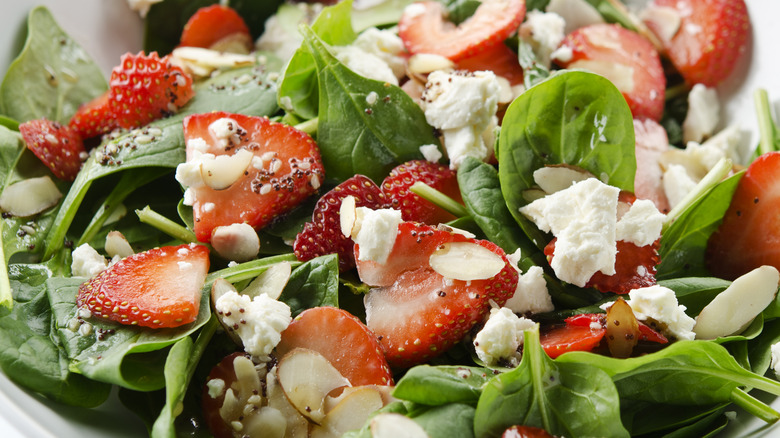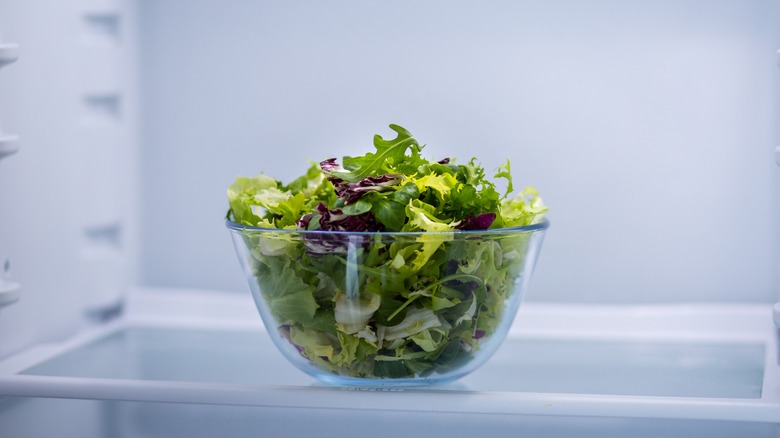The Best Spot In Your Refrigerator To Store A Salad
Not many recipes are as versatile and customizable as the green, leafy salad. Whether you're using collard greens with coconut dressing or an herby three-bean recipe as your base, a salad can work as a quick, nutritious appetizer, side, or main dish. Regardless of what you choose to build your mixed greens around, there are many situations where you'll want to store your concoction in the fridge instead of eating it right away. But if you ever find yourself in this situation, make sure to store your salad at the top and front of your fridge — and not along the bottom drawers with the rest of your vegetables.
Because vegetables (and in particular leafy greens) are prone to frostbite, you'll want to keep your salad along the front and top part of your fridge to avoid any unnecessary wilting. Because cold air naturally sinks to the bottom, the top of the refrigerator has marginally warmer temperatures, making it the perfect candidate to avoid any potential freezing. The top drawer in your fridge will also keep any potential spills or unsavory drippings from damaging your salad, especially if you don't stack any food items beside or on top of it.
Keep your crunchy and moist toppings stored separately
While it might be more convenient to store your salad premixed with all its ingredients, it's going to get soggy. You'll want to exercise more caution with your ingredients if you're not going to eat the salad right away. Because salads tend to have excess liquid on their surface, especially if they have any sort of dressing or wet ingredients — such as tomatoes or cucumbers — this can quickly turn dry toppings (like croutons and nuts) into mush. Dairy products, such as cheese, also run into the same issue, as moisture can easily ruin their texture as well.
To keep these parts of your salad from going bad, you'll want to portion out and store them separately. For shelf-staple garnishes such as seeds and raisins, you can just throw them in right before serving in order to maintain their crunch. Cheese and proteins such as grilled chicken or bacon bits can be cut, portioned, and stored in advance in a separate container in the fridge.
Make sure to keep your greens dry to ensure longevity
Regardless of what type of lettuce you use for your salad, excess humidity tends to be the biggest enemy for leafy greens. If left out for too long, unnecessary surface water can lead to spoilage on any fruit or vegetable — but especially leafy greens. The solution? Make sure they're bone-dry when you put them in the fridge. Use a salad spinner or fold in some paper towels with your lettuce. This will also extend the life of your lettuce, although keep in mind that this hack will take up a bit of container space as well.
You can also hold off on chopping any extra-moist vegetables (looking at you, tomato and cucumber) until serving — although this will add some unavoidable prep time right before serving. Once properly stored, time should be your only concern when it comes to preserving a refreshing batch of lettuce, but you can help combat this by labeling each container and trying to consume it sooner rather than later.



